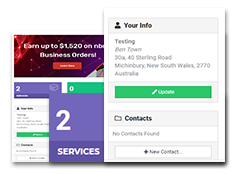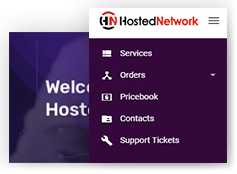Whenever I talk with MSP Owners or Sales People about their challenges in sales, the topic of QBRs almost always immediately comes up. Typically that they aren’t doing them and if they just implement a tool it’ll magically solve all their problems.
Having been an Account Manager in an MSP who successfully converted clients from T&M to Managed Services and maintained client environments way back in the day without the fancy tools I disagree that a QBR process is going to solve the fundamental issues of Sales in an MSP.
Firstly, for an industry comparison from my experience, only about 3 out of 10 MSPs do some form of regular proactive and formal meetings with their clients. When I say proactive and formal, I mean an agenda driven purposeful meeting, they we have initiated. This could be a QBR, an account management visit, a technical account driven maintenance visit etc.
So why do so few of us do this? For the majority I talk with it comes down to one simple thing I don’t have the time! This is from both owners and sales people. Let that sink in a minute, one of our core business activities that will generate us revenue/profit, we don’t have the time for?
This doesn’t sound right does it, but it is the comment that the majority tell me. When I dig deeper I uncover further reasons from both owners and sales people;
- I am too busy quoting
- I am busy dealing with issues
- I am busy chasing up orders
- I am busy talking to new prospects
- I am busy finding out information
- I don’t want to push things on my clients, I am not a slimy sales person
Now you might be thinking the same thing to yourself, but stop and think, what quantity/volumes are you actually dealing with, especially if you are an account manager. If you don’t have time to talk to clients now, why would a formal QBR process solve this? It wont!
Before we talk about the solutions, lets explore the QBR’s a bit more. A Quarterly Business Review is a formalised processed to take your clients through a structured conversation, it can be an extremely valuable tool in an Account Managers toolkit.
I hate the term as I don’t believe it applies to the majority of MSPs and here are some points why and thoughts for you to think about;
- Not all clients need or pay for a quarterly high level account engagement – If you have a bunch of small clients that are only paying you $300 to $500 per month why would you burn all your margin on a large formalised engagement each and every quarter?
- Not all clients are mature and respond to long term planning – The purpose of a QBR is to align what you are delivering to their business strategy and plans. What if they don’t have them?
- You probably aren’t working strategically anyway – Very few MSPs have a strategic seat at the table, we are engaged operationally and tactically. If you don’t have the basic modern technology environment compliance standards in place how can you work strategically?
- You will be talking around the wrong things – Because we don’t know what we are trying to achieve we generically copy what everyone else is doing. Have you stopped to think if what others are doing are providing any value? How useful is it for your clients to see technical stats or how about talking to CSAT? Maybe it is important for you and your clients, maybe it isn’t, but you are the people to make that decision.
Lets take a step back, so if a QBR isn’t the silver bullet what should you be looking at to have better engagements with your clients.
Firstly lets change our language from QBR to BTR, which stands for Business Technology Review. Why not be more upfront about what it is, we review your technology for your business so that it meets modern technology compliance standards to provide your client with value, ensures they maintain their lifecycles, are secure and can leverage technology to grow their business, reduce risk or increase efficiencies.
The best way to do and present a BTR is as a traffic light report. Red, Yellow and Green to spark conversations and make decisions. So what would it contain you ask?
- Wins – what has changed for the better, what projects have been done etc.
- Traffic Light Report – Covering Lifecycle, technology best practices, policies, security controls etc
- Lifecycle Report – Showing the age and coverage of warranty on devices
- Recommendations – Us reporting on what recommend to do
- Next Actions – Both parties actins that were agreed upon
Having this enables further conversations and questions to be asked in a more organic manner. For most clients you would spend the time doing the major work annually and then setup a rhythm that makes sense with the client, whether annually, bi-annually, quarterly or monthly to meet with them.
There are plenty of tools to run the Business Technology Reviews through and you can use a generic template but there is a benefit in spending the time in customising the generic template into your business and language.
By going through that process you will get the the following actions
- Creating your offerings catalogue – what are your solutions? what are your standards? pricing etc?
- Documenting your whitespace – Understand what your clients have and don’t have. Have it documented in your PSA/Documentation system
- Managing your Lifecycle – What are you doing to track the lifecycle of devices etc.
- Implement Quote Templates – Aligning your sales tool to the catalogue so that quote production is more efficient
There is a lot of work to create a repeatable sales engine that has high quality account management. It’s worth the work, it pays off not just with generating more sales, but to create more standardised environments and better client experiences because of that.
But don’t let perfection get in the way of progress, if you aren’t talking to your clients, getting a system and spending all that time that won’t change your results.
If you don’t know where to start, start by actually talking to your clients. Get to know their business, their objectives, their wants and needs. This will not only net you results but create stronger relationships.
About the author

James Davis is the Director of Pax8 Academy Asia. Originally from Canberra, he recently moved as far south as he could to Hobart. He joined the Sea-Level family in 2020 to grow the Sea-Level Operations offering locally in the APAC Region, joining Pax8 in May 2022 to elevate the industry through education.
James is a coach that has over 16 years industry experience in owning and managing SMBs. His core purpose is “To create freedom from chaos from the lives of others so they can thrive and grow”.
He values personal development, always trying to learn something new to build his body of knowledge to grow as a person and leader. James tries to share his knowledge and experience as much as possible, believing in the go-giver mentality.
About Pax8
Pax8 simplifies the way organisations buy, sell, and manage cloud solutions. Join the cloud marketplace that unlocks a universe of possibility! Sign up here.
 Contact us
Contact us  Partner Login
Partner Login  Service Status
Service Status 


 June 23, 2023
June 23, 2023
 James Davis
James Davis
 3 mins
3 mins